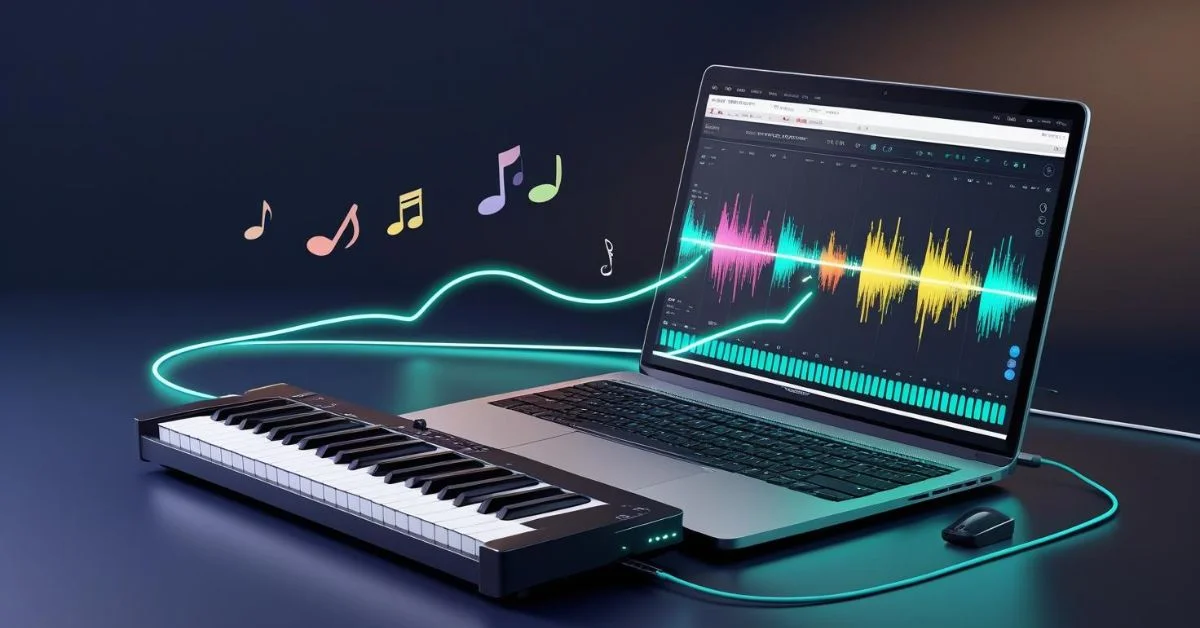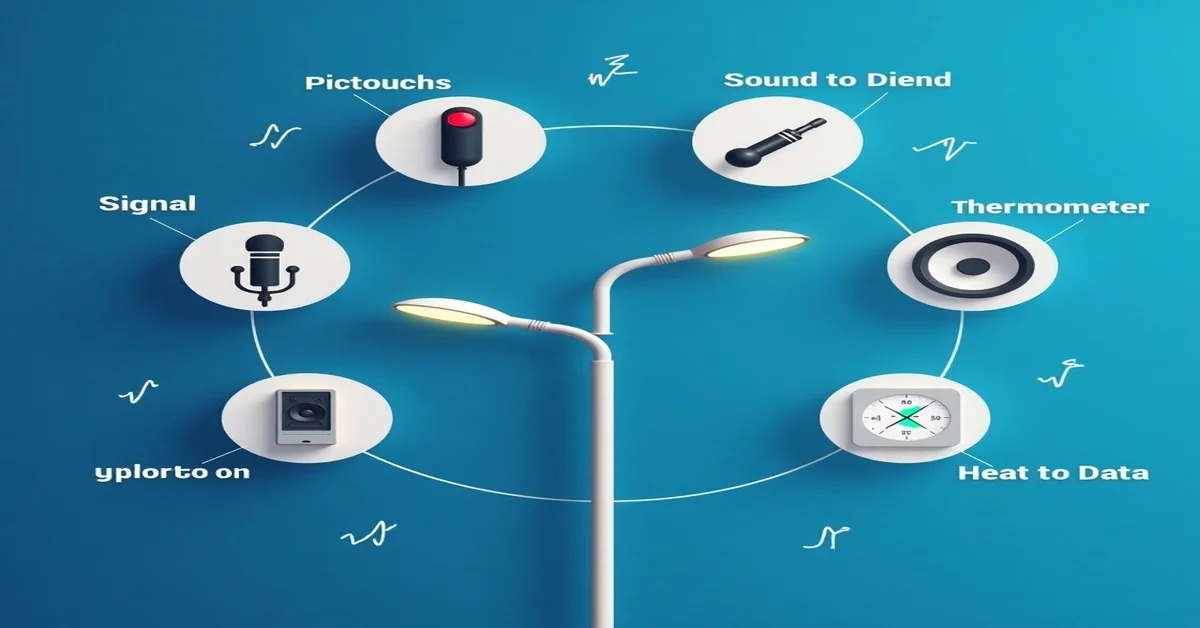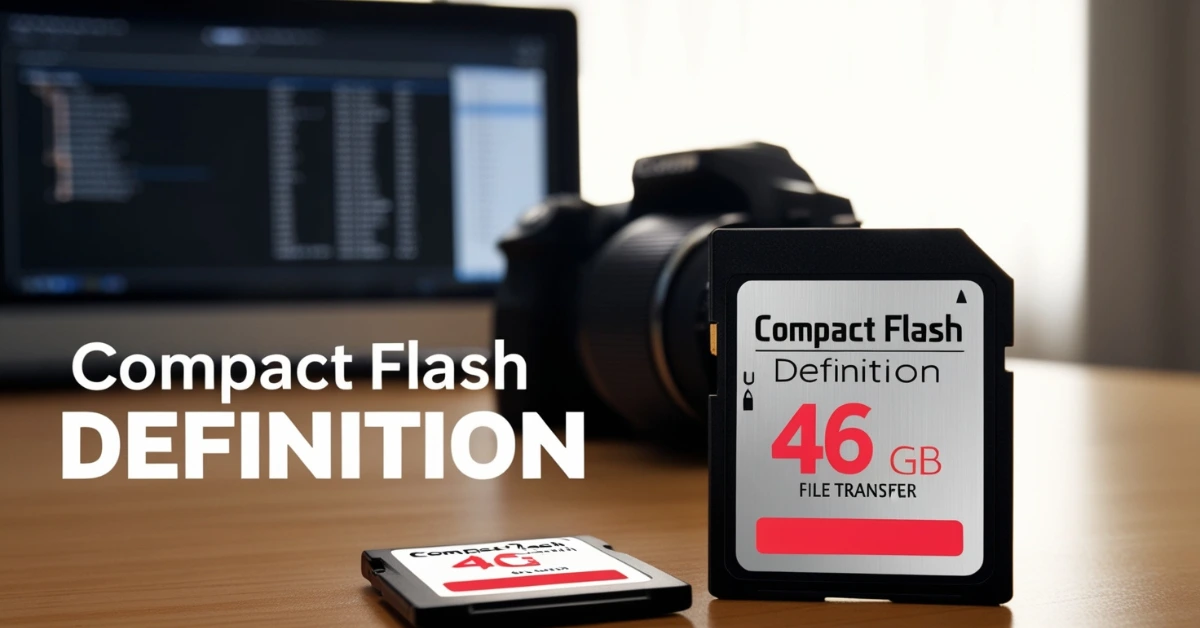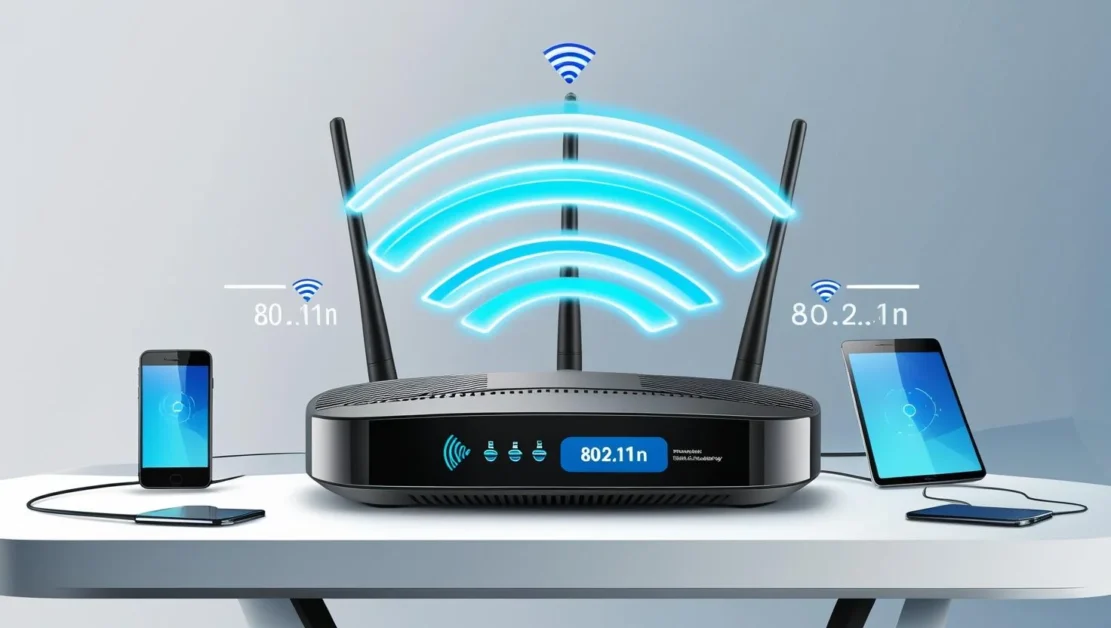Musical Instrument Digital Interface, better known as MIDI, is a system that lets musical devices, like keyboards and computers, talk to each other. Think of MIDI as a language that music gear uses to communicate. Rather than sending actual audio, it transmits commands like, which note should be played, at what volume and for how long.
MIDI was Created in the early 1980s. Back then, devices from different brands couldn’t connect. You couldn’t plug your Yamaha keyboard into a Roland synthesizer. In 1983, developers from the U.S. and Japan created a shared standard known as MIDI. Suddenly, any keyboard could control any sound device even from different brands.
Why use Musical Instrument Digital Interface (MIDI)?
Musical Instrument Digital Interface isn’t about sounds it’s about control. When you press a key on a MIDI instrument, it sends a data message containing details about that note. This includes which note was played and other expressive elements. Here’s what it can do:
- Trigger a sound on another device or in your computer
- Record performance in a digital studio and edit things like pitch or timing
- Automate settings like volume, effect and pitch
- Connect multiple devices to work together, even in live shows
MIDI data takes up almost no space on a computer. That makes it easy to edit or send between people and it’s why musicians love it
How Musical Instrument Digital Interface (MIDI) works?
MIDI works by sending small data packets that look like this:
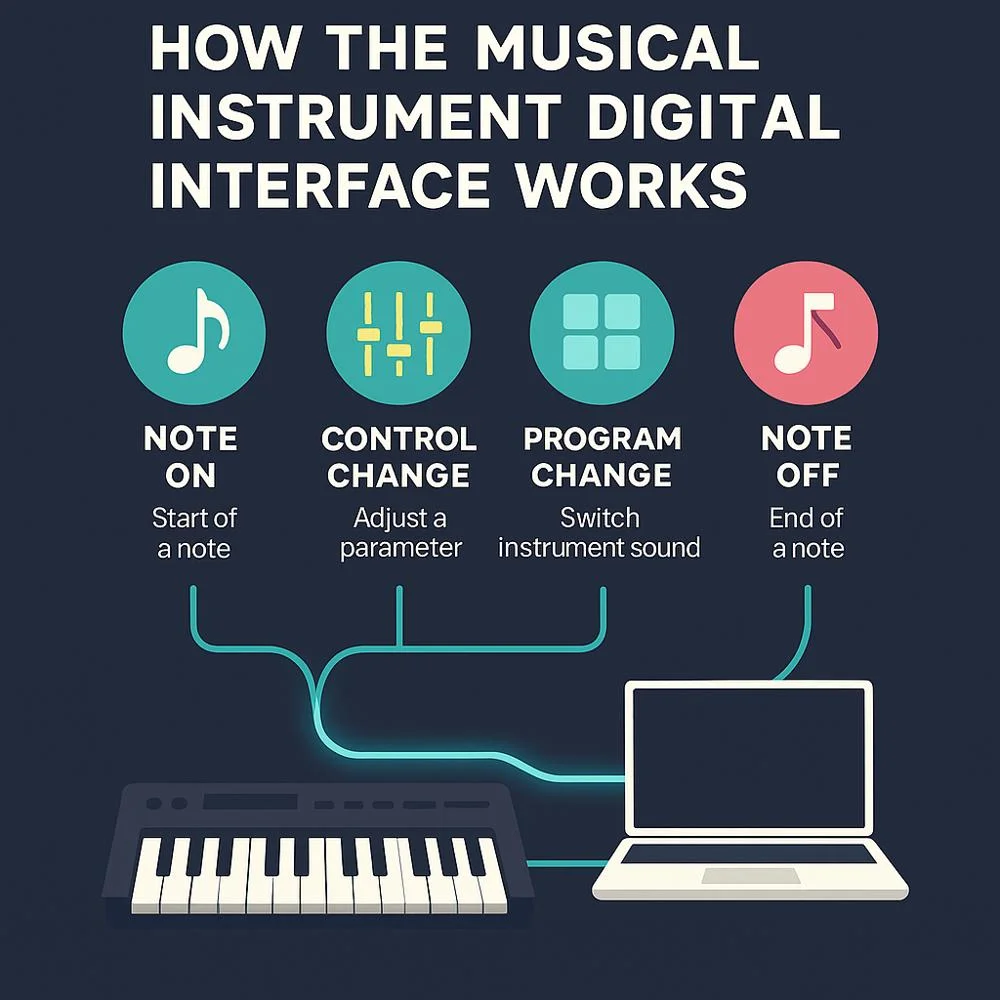
- Note On: Triggers the start of a note and indicates how hard the key was pressed, which adds expression to the sound.
- Control Change: Adjusts a parameter such as volume, modulation, or effects through sliders, knobs, or pedals.
- Program Change: Switches the instrument sound or patch on the connected device.
- Note Off: Marks the end of a note, signaling the device to stop playing the sound.
These messages travel from devices like MIDI keyboards to computers or synthesizers, forming the core of digital music creation.
Each message includes a status byte and data bytes. For example, a Note On message has a command byte plus two numbers: one for pitch, one for how hard the key was pressed. There are also system-exclusive messages (SysEx) for special device commands. MIDI runs at around 31,250 bits per second over classic 5-pin DIN cables, though USB and even wireless options exist today
MIDI Ports: In, Out, Thru
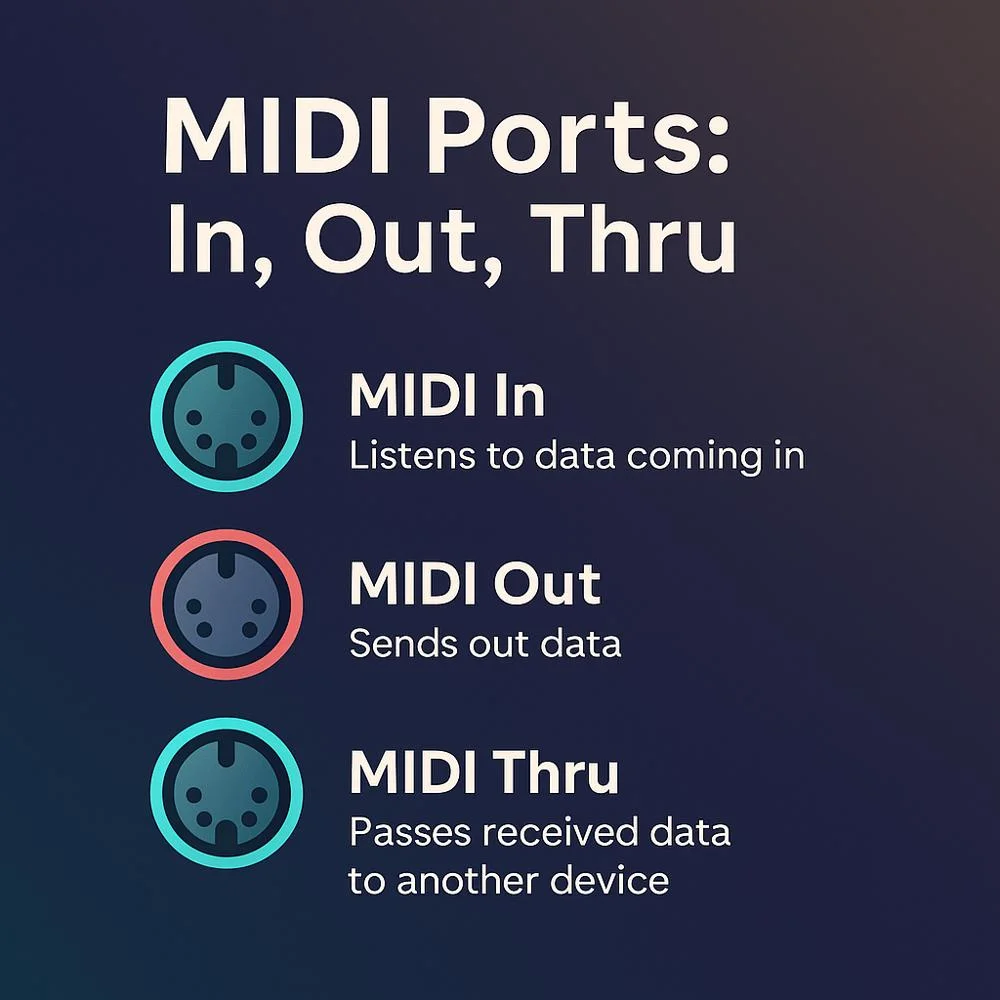
- MIDI In: listens to data coming in
- MIDI Out: sends out data
- MIDI Thru: passes received data to another device
Some devices use USB MIDI, which is powered by the computer and easy to set up. Interfaces come in 2-, 4-, or even 8-port versions, letting you connect many devices simultaneously.
How musicians use MIDI?
1. In the studio (with DAWs)
DAWs like Ableton Live, FL Studio, Logic Pro, and Pro Tools let you record MIDI on one track and play it with different virtual instruments. You can change the instrument later, tweak the melody, rhythm and mix everything. Easy editing with no need to re-record the whole take.
2. Live shows
Bands or solo performers can map MIDI to change sound patches, run backing tracks, or even control stage lighting all hands-free.
3. With hardware gear
Some musicians prefer old-school gear like drum machines or synths. MIDI links those hardware devices so you can play one to control another in sync.
Musical Instrument Digital (MIDI) Controllers
A MIDI controller is any device that sends MIDI messages. The most common are keyboards, but there are also pads, wind controllers, foot pedals, even guitar-like MIDI gear. Controllers often include knobs, sliders, pads, wheels, and pedals for extra control. You can map these to different functions in your software or synths.
1. Musical Instrument Digital Interface (MIDI)keyboards
These look like piano keyboards but don’t make sound on their own. They send messages to your DAW or sound module. They come in sizes from 25 to 88 keys and often include pitch sliders, mod wheels, drum pads and transport controls like play/stop buttons
2. Other controllers
- Pad controllers, like Novation Launchpad, are great for electronic music or drumbeats.
- Wind controllers, where breath and finger pressure shape the tone.
- Grid-based or unique designs like Artiphon combine many playing styles into one device
MIDI Standards Today
1. Musical Instrument Digital Interface (MIDI 1.0 vs MIDI 2.0)
MIDI 1.0 was launched in 1983. It’s still widely used and reliable. In recent years, MIDI 2.0 emerged with higher resolution, metadata, better control messages and automatic configuration. This new version of MIDI is slowly becoming available in modern devices and music programs.
2. Other Musical Instrument Digital Interface (MIDI) specs
- General MIDI (GM) ensures consistent sound mapping e.g., program 1 is always a grand piano
- MIDI Show Control (MSC) helps run lights and theater cues through MIDI signals
Setting up a simple MIDI rig
- Plug in your MIDI keyboard using a USB cable or connect it through a MIDI interface.
- Open your DAW and create an instrument track
- Arm the track, select a virtual instrument (piano, synth, etc.)
- Play your keyboard, MIDI notes will appear in the DAW, triggering sound
- Record, edit, add effects, or change sounds anytime
You can tweak notes after recording like making one louder, longer, or shifted by a few beats.
Tips for getting started
- Learn basic MIDI terms: note, velocity, channel, CC (control change)
- Choose a simple MIDI device (25-keys) and upgrade later
- Use velocity-sensitive keys they respond to how hard you press, making music sound more expressive
- Try assigning different knobs to control things like volume levels, filter sharpness, or how deep an effect goes this is called MIDI mapping.
- Practice playing, record short loops, then edit or add more tracks
Why MIDI matters?
- Flexibility: change instruments after recording
- Efficiency: small file sizes, easy edits
- Control: you shape every note and detail
- Interoperability: connects gear from different brands
Even today, MIDI is the backbone of digital music, used in studios, live performances and educational setups
Conclusion
MIDI is a universal language for music gear, enabling you to play, record, edit and connect devices easily. From simple keyboard parts to complex live show setups, it gives musicians and producers a powerful toolkit. No matter your skill level, learning how to use MIDI opens the door to limitless creativity in making and shaping music.
